How to properly glue paper wallpaper?

Now it is difficult to keep track of new products in building materials. There are a huge number of types of wallpaper. But if we want to budget, quickly and fashionably decorate our home, we still turn to paper wallpaper. Correct gluing is the basis of the durability and beauty of this coating.
Peculiarities
Paper wallpapers have been common in interior design for a very long time, but they do not lose their popularity. Thanks to progressive developments, now this modern high-quality coating is sometimes not inferior to other types of finishing materials.
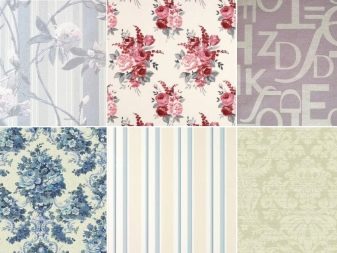

Their main difference is that they have a low price. The base made of natural material (cellulose) makes the wallpaper breathable. Therefore, they are often recommended for decorating a nursery.
But paper is completely incapable of contact with water, so it is better not to use them in rooms with high humidity.
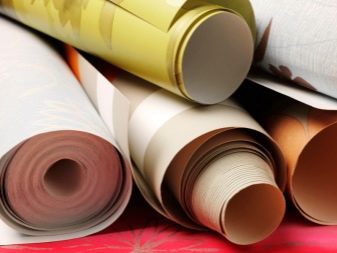
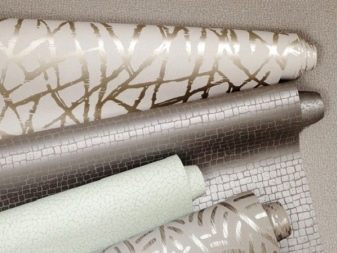
Views
There are several varieties of paper trim.
By the number of layers, the wallpaper is:
- Simplex (one layer). They are the least durable and therefore the cheapest. And also have a smooth texture;
- Duplex (multilayer). They are stronger than single-layer, adhere well, but require more composition. With the help of them, you can solve the problem with defects on the walls.
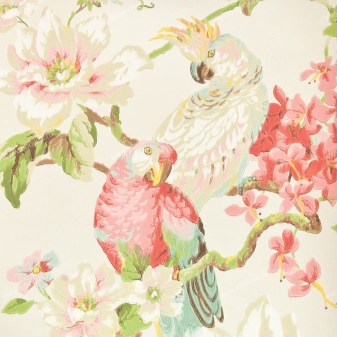
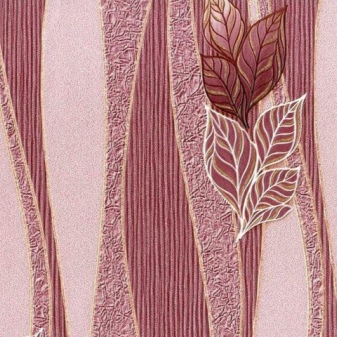
Moisture resistance:
- Unstable - in no case should they be used in rooms with high humidity. And if you get them dirty, then there's nothing you can do;
- Washable (have an upper protective layer). They can be used in the kitchen, but it is better not to use them in the bathroom. Care and Cleaning - Wash with a damp cloth.
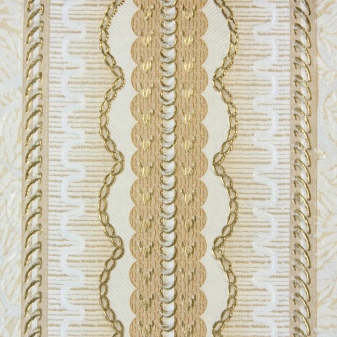

By texture, paper wallpapers are divided into:
- Smooth. Most often these are ordinary simplex wallpapers;
- Embossed. The coating consists of two layers, has a relief and volume, imparted by the embossing method;
- Foam wallpaper also multi-layered. Acrylic is applied between two layers of paper and heated, as a result of which it becomes foamy and increases the strength of the wallpaper. Sprayed acrylic products fascinate with the beauty and variety of relief patterns;

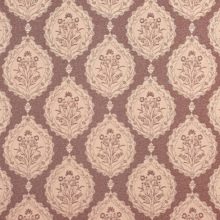

- Wallpaper with shavings. The shavings between the layers of paper, as a result of pressing, give a relief surface, such wallpapers do not lose their naturalness;
- For painting. This is a textured wallpaper on which paint is supposed to be applied;
- Wallpaper with a paper layer. In this case, the paper is combined with other materials - interlining, fabrics, cork and veneer. The properties of the coating can vary greatly depending on the second material.
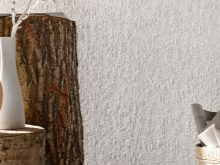
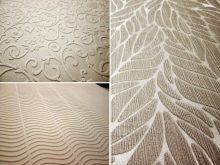
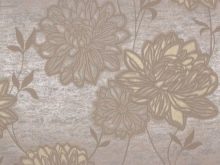
Overlap or butt?
Paper wallpapers can be glued in two ways: by placing the canvases on top of each other with a gap or by joining them together. Budget thin wallpaper can be glued overlapping each other. Most often they already have an edge edge. The overlap technique will also help correct minor bumps and valleys in the walls. Overlap gluing technology is used in new buildings and wooden houses, because there is a risk of shrinkage, distortion and appearance of defects on surfaces. If the base of the wall has significant flaws, and the wallpaper is selected heavy and embossed, then it is worth abandoning this technique.
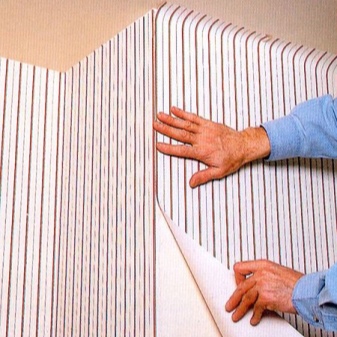
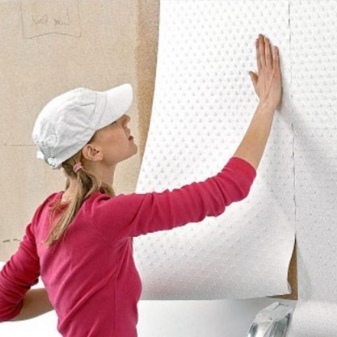
The technique of gluing wallpaper by joining is somewhat more complicated than the previous one. After all, the joints should turn out without gaps, perfectly smooth and neat.In the case of the most accurate joining, you will get a beautiful and uniform surface. If the wall has significant curvature, then it must first be leveled to avoid unsightly gaps in the wallpaper.
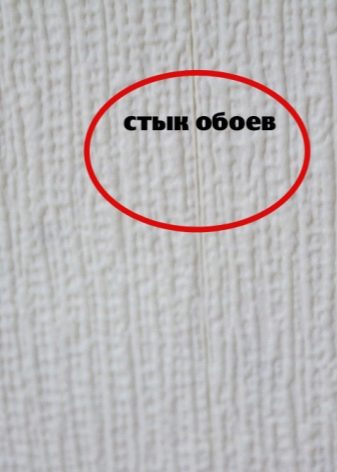
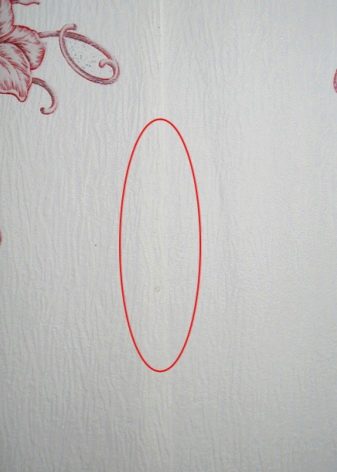
Materials and tools
Before wallpapering, you need to stock up on all the necessary tools:
- roulette;
- construction pencil;
- paper knife;
- level or plumb line;
- roller and container for glue;
- a bucket and a device for mixing the composition;
- small paint brush for applying glue to hard-to-reach areas;
- a brush or cloth to smooth the wallpaper;
- ladder.
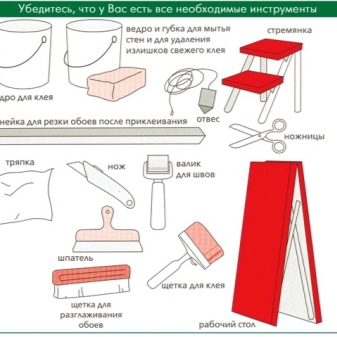
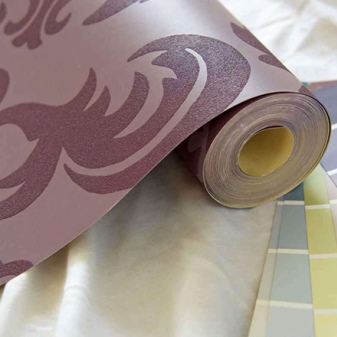
It is worth mentioning a modern development - a background for wallpaper. This is a roll material consisting of three layers: in the middle there is polyethylene foam, and the two outer layers are made of non-woven, paper or cork. And the type of pasting paper must be selected based on the required properties. If you want to decorate a room with excessive moisture, it is best not to use a paper backing. And cork is the most environmentally friendly.
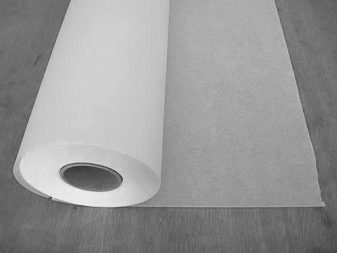

There are many advantages to using such a layer: it evens out the base, can hide minor wall imperfections, increases sound insulation and retains heat better. Wallpaper is easier to glue and more durable. But it can only be used for dense thick wallpapers, since thin ones can shine through it.
The surface of the walls must be prepared before work. This is done by priming. A special composition is applied, with the help of which the glue will better fulfill its task, and there will be fewer various defects.
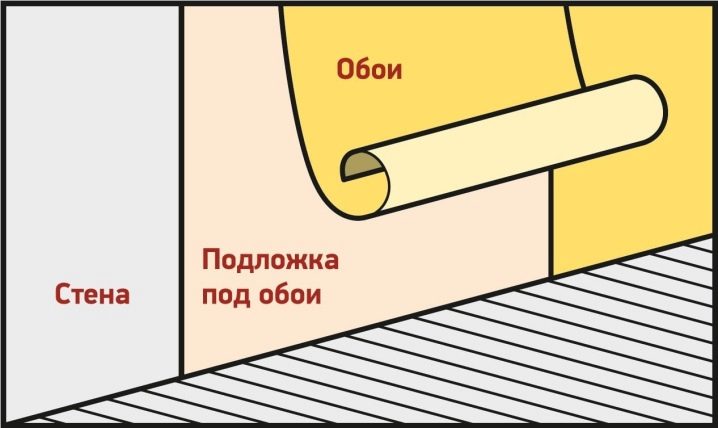
How to primer?
There are many different formulations for wall priming in stores. But not all of them are suitable for paper wallpapers.
- The simplest option is to find a glue that can be used as a primer. The label usually describes in what proportions to dilute it for this purpose.
- If the adhesive is not suitable, then a widely used acrylic primer can be used. It is suitable for all surfaces. The acrylic solution has no smell, but it dries for a long time.
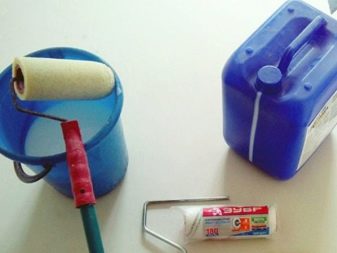
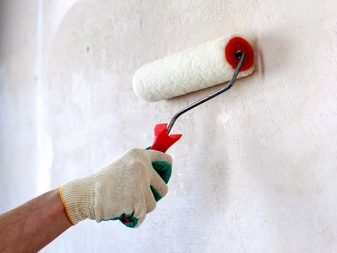
Choosing glue
Glue is one of the main materials in the process of wallpapering. It should be chosen in accordance with the recommendations of the wallpaper manufacturer. Sold in powder form and mixed with water to a medium consistency. It is better not to store ready-made formulations for a long time.
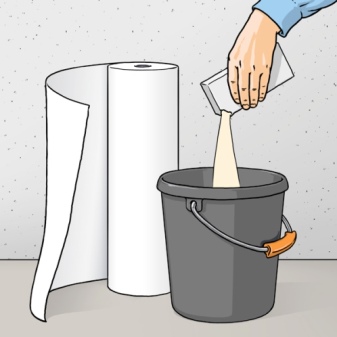
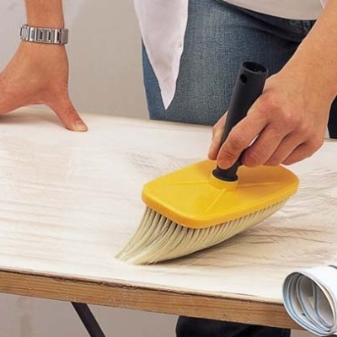
Half a century ago, our predecessors cooked the glue themselves - a starch-based paste perfectly fulfilled its role, although it had to be used at one time. But now the stores are full of different types and brands of wallpaper glue. It is best to select a composition specifically for the paper coating. The domestic CMC is widely known on the Russian market. But for those who prefer imported products, you can choose the German "Methylane" or the French Kleo.
In the case when you need to combine paper coatings with other types so as not to select and stir several types of glue, you can purchase a universal one.
But its composition is full of chemical additives. Therefore, it is better not to use it unnecessarily. Non-woven glue is also suitable for paper. But a thin coating can deform from heavy mortar.
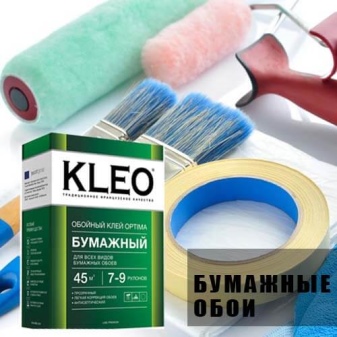
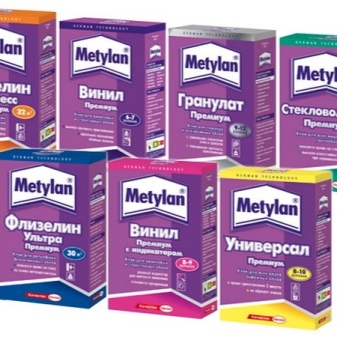
The required amount of the composition can be determined based on the recommendations on the package. Usually it is indicated how many square meters a box or bag with the mixture is designed for.
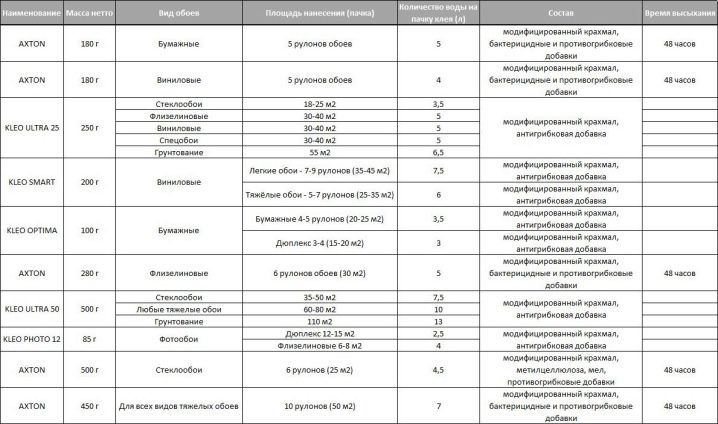
How to apply?
On the laid out wallpaper, glue is applied with a special roller or with a wide painter's brush in the direction from the center to the edges. It is necessary to ensure that a large amount of glue does not accumulate along the edge, so that later you do not have to wipe it off from neighboring canvases. It is necessary to work out the entire sheet carefully with the composition, leaving no empty spaces. This will get rid of defects later. One-layer trellis should be smeared with a thin layer, as they are very fragile. And it is better to coat the multilayer material more abundantly.
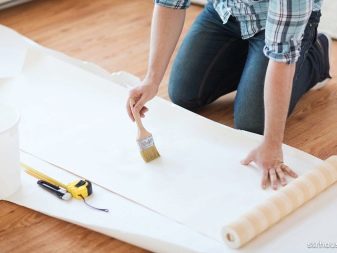
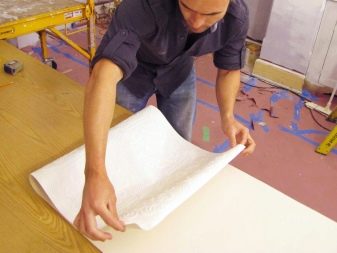
We select the surface
Walls can be in different states, and it is not always possible to immediately proceed to pasting. Sticking to old wallpaper isn't a great idea. The previous layers must be carefully removed, because you cannot be sure whether they were glued well, whether the new ones will peel off along with them. The pattern of the old coating may show through the new one, or the old seams will be visible.
It used to be considered an excellent solution to pre-cover the wall with newspapers, and then place the wallpaper. This option is unacceptable for the above reasons.

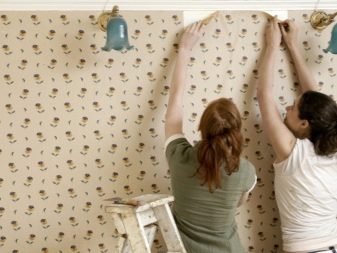
Trying to save time on renovations in new buildings, some try to glue wallpaper onto plaster. But this option will not give the best result either. Plastered walls will absorb huge amounts of glue due to their loose structure, and the new coating may simply fall off. On old plaster, you also need to remove all irregularities, remnants of materials from its surface, grind to an even state and go through with a fine putty and primer, and only then finish the wall with new material.
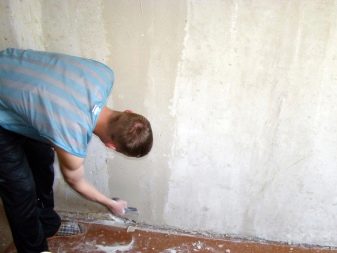
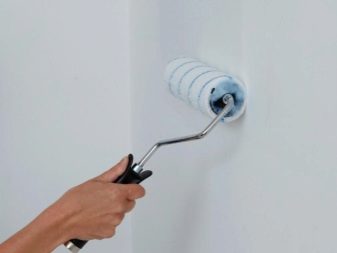
What to do if the wall is painted. In this case, everything depends on the applied composition. If the paint was water-based, then you can glue the wallpaper on it, having previously primed it. The rest of the compositions will need to be removed. But this process is very laborious. Therefore, in order to wallpaper the paint, you can sand the surface to roughen and walk with a primer so that the glue adheres better to the wall.
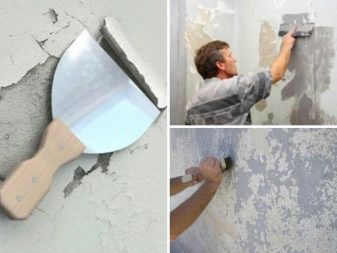
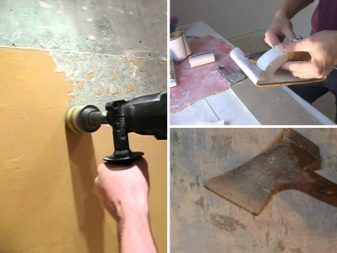
Partitions from fiberboard or drywall can be erected in the room. These materials are also used for leveling walls in private and old houses with large defects and curvature. Ordinary wallpaper can be glued to drywall if it is pre-treated with putty and primer. Otherwise, the inscriptions, the color of the sheets may appear, the adhesion will not be ideal, and the wallpaper will go away. In the case of fiberboard, processing is also necessary. Plus, partitions are mounted using self-tapping screws. Consequently, large joints are formed. So that neither them nor the heads of the screws can be seen through the wallpaper, at the initial stage you need to apply a rough putty.
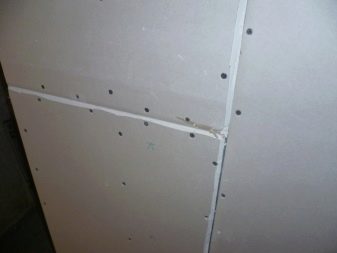
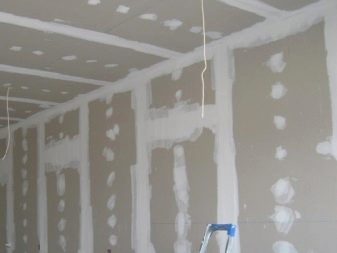
The concrete base requires full surface pretreatment, otherwise its dark color and multiple defects will be visible through the paper.
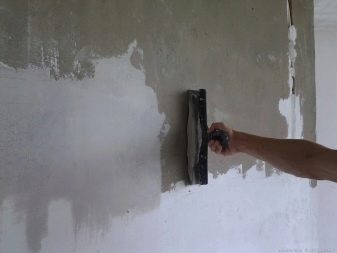
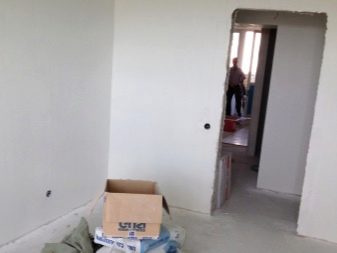
Technology
In order to properly glue thin paper wallpaper on the walls yourself, you need to strictly follow the rules and technology of this process:
- clear the room of all objects and make sure that the wall surfaces are properly prepared;
- prepare all the necessary tools and materials. You will need a stepladder or chair;
- markings need to be applied to the walls. As a rule, they begin to glue from the window. Using a level or plumb line, determine the vertical and mark it with a pencil, without drawing a clear and bright line;
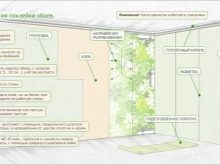
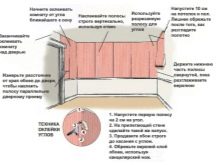
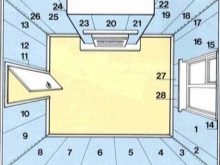
- it is necessary to cut the wallpaper. If they have a pattern, then it will be necessary to adjust the canvases so that it joins well. Measure the canvas to the desired length, taking into account an allowance of about 10 centimeters for the height adjustment. Use a ruler, knife and pencil to cut the desired piece. If you are sure that the distance from the floor to the ceiling is without strong drops, you can cut all full strips at once. The leftovers will go for pasting at the windows and above the door;

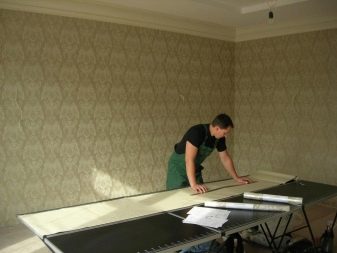
- you need to dilute the glue, as written on the package, mixing it thoroughly. Apply glue to the wallpaper with a roller and spread it around the entire perimeter of the sheet;
- strips are advised to be folded in half or in layers so that it is convenient to transfer them into place. But this must be done very carefully so as not to stain the front side and not leave a crease;
- taking into account the gap under the plinth, attach the wallpaper from above, focusing on the vertical;

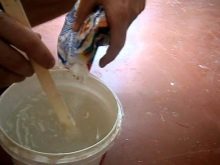

- now it is necessary to smooth the canvas with a rubber roller or a clean cloth so that there are no swollen places left;
- remove all excess from above and below with a clerical knife. Traces of glue on the finished surface are immediately removed with a damp sponge;
- the new strip is glued end-to-end or overlapped, carefully so that the seam is not visible.
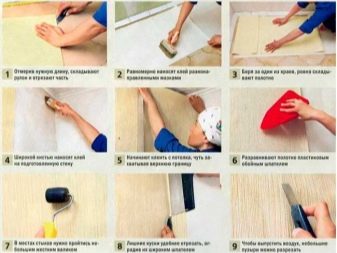
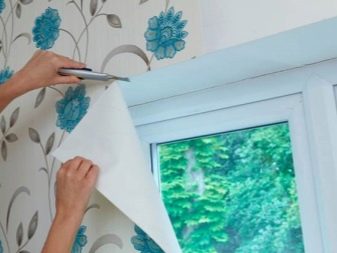
One layer of glue is applied to single-layer wallpaper, and they are immediately attached to the wall. Smooth them out with a napkin without pressing hard. Sticking heavy wallpaper, for example, with an embossed duplex on a paper base, is somewhat different: the glue is applied both to the sheet and to the wall. Wallpaper can be pre-folded to soak for 3-5 minutes. Smooth the canvas with a brush. Gluing of simple wallpaper without seams for one person needs to be carried out in stages, making measurements, cutting, spreading glue on each individual strip and joining it after the previous one. After completing all these steps for several canvases, you can come up with many irreparable mistakes.
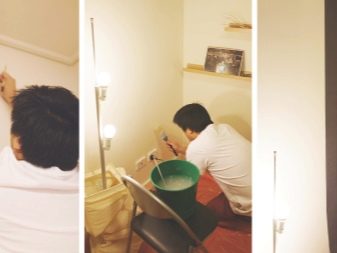
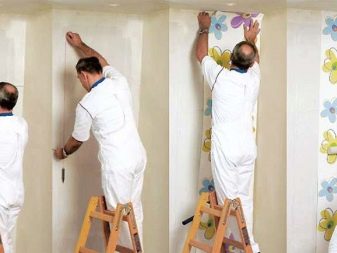
To stick the wallpaper without bubbles with your own hands, you need to make sure that the wall is well primed and has no pits or crevices. It is necessary to spread the glue evenly and completely cover the entire wallpaper sheet with it. And during gluing, carefully smooth out irregularities in all directions, avoiding air bubbles.
The process of gluing on corners has its own subtleties. In this case, paper wallpaper is glued with an overlap. One canvas is brought to the next wall for a couple of centimeters. The second canvas is glued with an overlap on the first from the very corner. But if the angle is uneven, the result will be sloppy.


In the second option, the first strip is also glued with an overlap on the wall, but a little more. Orient the second strip vertically along the far edge from the corner. And we glue it on the first with an overlap of 2 cm.Then, using a level, mark the vertical and cut the seam with a paper knife. We remove the remnants of the wallpaper and glue the lagging places. In the outer corners, the technology is similar to the second method.
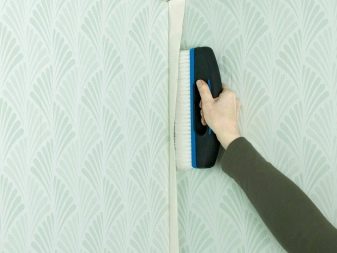

Why are they bubbling?
Bubbles on the wallpaper can occur due to a draft in the room, if you poorly smeared the canvas before gluing, the wall is poorly processed and there is air in the unevenness, if the glue is too heavy for the paper covering, or you did not smooth the canvas well. Do not allow the wallpaper to soak in glue for too long or fold thin wallpaper and grease it with a thick layer of glue so that it does not wrinkle later.
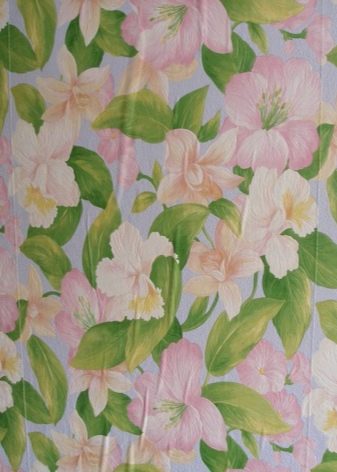

Secrets and Tips
When cutting, do not cut all the material at once. It is easy to make a mistake, but it is impossible to fix it. Wallpaper, especially single-layer wallpaper, is better to spread with glue one strip at a time and immediately glue, and not soak all strips at the same time, as the finishing rules recommend. It is better to cut off the excess cloth from above and below after gluing the cloth. It will be easier to correct this way. It is worth to dock the wallpaper immediately after gluing, and not after you have smoothed the surface. If glue gets on the outside of the wallpaper, do not rub it hard with a rag. Paint or texture can be damaged, especially on cheap wallpaper.
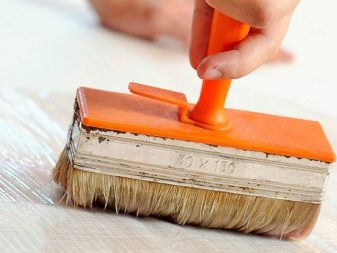
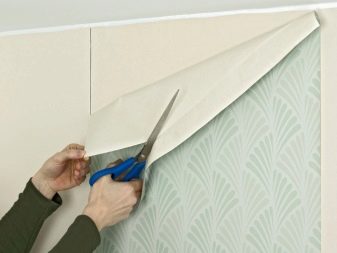
How quickly do they dry?
Paper wallpapers dry much faster than other types due to their porous structure and air permeability. After gluing, on average, it should take from 8 to 24 hours until it dries completely. But if the room is cold and high humidity, the time can double.
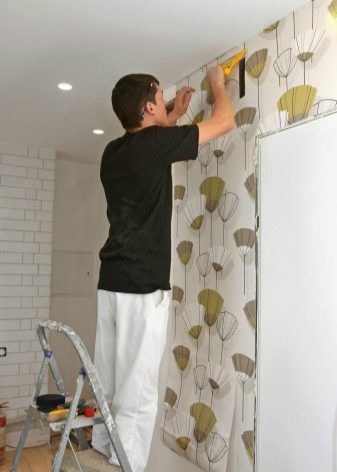
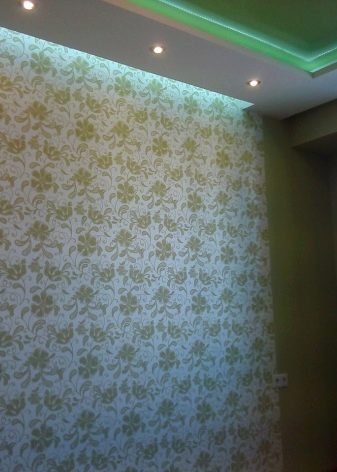
Beautiful interiors
Freshness, positivity and romance will add paper wallpapers with large flowers to the Provence-style dining area.
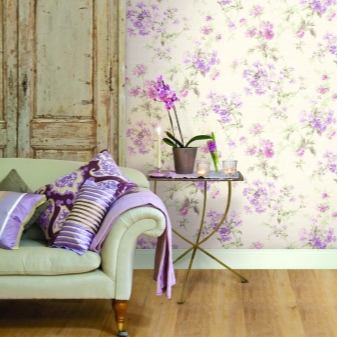
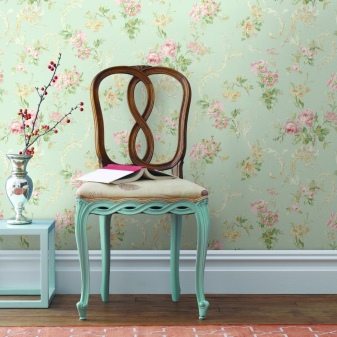
A beautiful and unusual vintage design can be emphasized even by inexpensive paper covers.
A beautiful and unusual vintage design can be emphasized even by inexpensive paper covers.
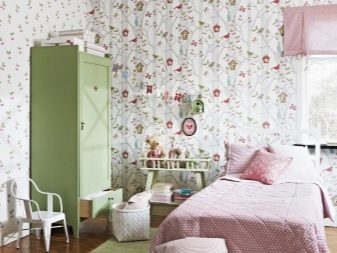
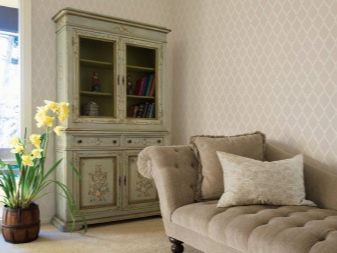
Environmental friendliness and naturalness of the environment will enhance the wallpaper with natural motives.
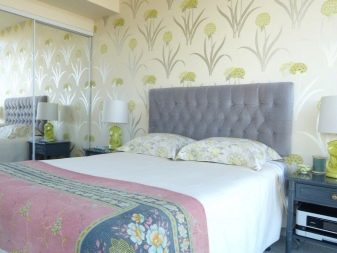
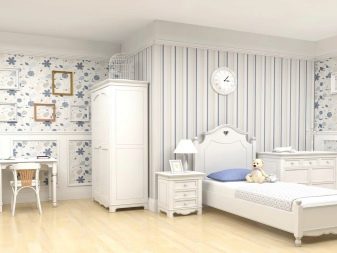
The baroque palace interior will be complemented by organic light paper patterns.

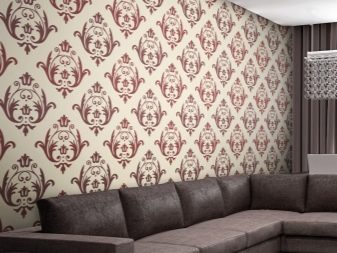
For information on how to glue paper wallpaper yourself, see the next video.













The comment was sent successfully.